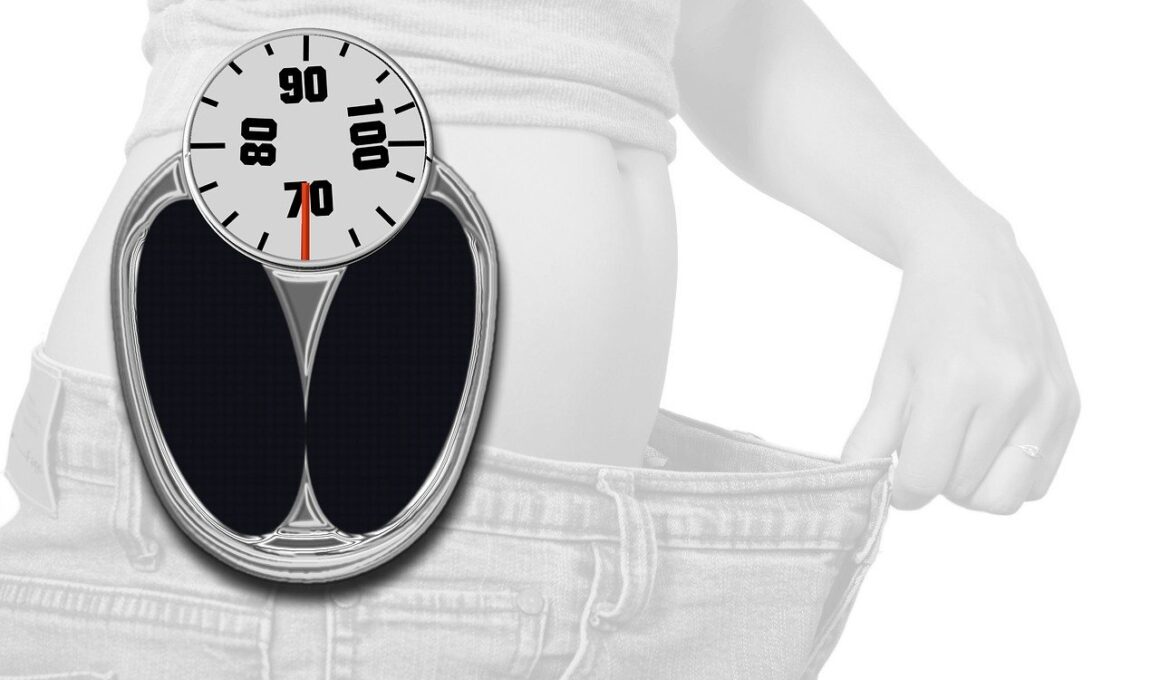Battery Life and Durability: What to Expect From Weight Loss Trackers
When it comes to using weight loss trackers effectively, understanding battery life and durability is essential. These devices are designed to monitor various health metrics and provide valuable insights into your fitness journey. Most fitness trackers boast impressive battery life, ranging from several days to weeks on a single charge. This longevity is crucial for users who want a consistent reading without daily interruptions. However, battery performance can depend on usage intensity; features like GPS tracking greatly impact how long your device lasts before needing a recharge. Additionally, differing manufacturers employ a variety of battery technologies, influencing not just longevity but also charging speed. Users should also consider wearability since devices worn all day require more robust constructions. Durability plays a crucial role in the longevity of wearables. Check durability certifications such as IP ratings, which specify water and dust resistance levels. Always ensure your tracker can withstand the rigors of daily life, especially if engaging in rigorous workouts or outdoor activities, where sweat and environmental exposure can significantly affect a tracker’s overall performance.
In addition to battery life, an important aspect to address when choosing a wearable is the durability of its construction materials. Most modern fitness trackers utilize materials designed to be lightweight yet resilient, ensuring they can withstand everyday wear and tear. Look for devices with high-quality synthetic rubber or sturdy plastics that can endure impacts without breaking or scratching easily. Additionally, some wearables use glass screens that are either reinforced or covered with special coatings to prevent scratches during daily activities. This attention to material quality enhances user experience and extends device lifespan. Regular maintenance and following manufacturer guidelines significantly aid in sustaining durability. Rinse your tracker after workouts, especially in salty or chlorinated environments. Avoid exposing the device to harsh chemicals or extreme temperatures. Explore popular brands’ online reviews and specifications, as they often provide insights on real-world performance concerning durability and battery life. Investing in a reliable fitness tracker can help provide motivation and facilitate effective weight loss management, which is crucial for any fitness journey.
Another critical aspect of battery life in wearables pertains to software optimization. Manufacturers often implement various power-saving modes to extend battery longevity. For instance, watchOS and similar operating systems provide options to disable non-essential features when the user is not actively monitoring metrics. Implementing these settings can significantly improve the battery life of the device over extended periods. Furthermore, updates from manufacturers can enhance battery performance and fix potential issues affecting battery usability. Check for these updates regularly, as they can offer significant advantages. Choosing wearables with smart battery conservation features can improve experiences for those needing their devices throughout busy days. Users should also be aware of how notifications and syncing intervals can affect battery life. Continuous syncing with your smartphone might drain the battery faster than expected. Adjusting notifications settings to limit which information synchronizes in real-time may provide excellent battery extension while maintaining functionality. Weight loss trackers excel not only in helping users monitor progress but also in offering ways to manage battery life effectively, encouraging continuous wear and enhanced tracking of weight loss goals.
The Role of Regular Charging
Properly managing battery life entails understanding how and when to charge your device. Regularly charging your fitness tracker might seem tedious, yet it is essential for sustained performance. Most users find that charging their device every few days works best. However, some find options like overnight charging beneficial, as it can often accommodate daily routines. A key component is to monitor battery performance closely, learning your device’s charging habits to maximize functionality. Some wearables offer battery life indicators, showing users how much power is left. It’s advisable to charge your device once the battery capacity dips below a certain percentage, ensuring no sudden power loss occurs during crucial workouts. Manufacturers recommend avoiding letting the battery drain completely before charging. Doing so can negatively affect battery health in the long run. Plan your charging habits, integrating them into your daily routines, enabling you to wear your tracker consistently without interruptions. This practice assures you will always have a functioning device to monitor metrics essential for tracking weight loss effectively, encouraging a healthier lifestyle.
Moreover, many weight loss trackers today are designed with advanced energy standards, further enhancing their efficiency. Devices equipped with cutting-edge technology typically draw less power while in use, resulting in better battery life. When purchasing a new tracker, assessing energy specs can help determine the overall efficiency of the device. Additionally, some wearables feature fast-charging capabilities, allowing the user to get back to tracking swiftly after a short charge. Look for features such as fast charging or smart energy-saving modes to maintain prolonged usage throughout your fitness regime. Utilizing these capabilities ensures that your weight loss tracker remains functional and convenient during active engagement in physical activities. Also, keep in mind your individual usage patterns, as frequent adjustments in settings may enhance or impair the device’s energy efficiency. Opting for fitness trackers with higher efficiency ratings guarantees that you can maintain an engaging and productive experience, allowing seamless tracking of weight loss progress and achieving desired fitness goals without worrying about battery life.
Water Resistance and Activity Level
When discussing durability, water resistance becomes an indispensable factor. Most wearables today incorporate water-resistant designs, allowing users to wear them while swimming or exercising in inclement weather without damaging the device. Understanding the IP rating system that denotes water and dust resistance can guide in making a sound purchase. For swimmers or those regularly engaging in water-related activities, selecting a tracker with at least IP68 or better certification ensures suitability. However, be cautious, as some manufacturers impose limitations on functionalities when submerged in water. Other robust wearables can even withstand harsh environmental conditions, so select wisely according to your activity type. Moreover, keep in mind that daily wear and tear will take its toll over time. Regularly inspect the device for scratches or any sign of weakness in the water-resistant seals, which could impact its overall functionality and durability in the long run. Understanding these factors equips users with knowledge to ensure optimal performance, enhancing their overall experience with tracking weight loss effectively through consistent activity monitoring.
Ultimately, making an informed decision concerning weight loss trackers requires a comprehensive understanding of both battery life and durability. Apart from collecting data on your fitness journey, these devices need to be reliable over time. Seeking premium brands with a reputation for quality ensures that users invest wisely in a wearable that offers enduring performance. Always look for model reviews, checking user experiences regarding battery life and durability across different scenarios. Social platforms and dedicated fitness forums can yield valuable insights. Look for the experiences of others who use wearables similar to what you’re considering; this can shed light on issues you might encounter. Being proactive about these factors equips users with the necessary knowledge to select devices that align with their health and fitness objectives. In conclusion, maintaining an active lifestyle and meeting personal weight loss goals involves harnessing the power of technology, making it essential to invest in trackers designed for lasting performance. By focusing on these attributes, users can enjoy a rewarding and effective weight loss journey.
Conclusion
In summary, understanding the intricacies of battery life and durability in weight loss trackers can significantly enhance your ability to meet health objectives. These factors are not just technical specifications; they influence your day-to-day engagement with the wearable. Regular evaluations of the battery, understanding charging practices, and making informed decisions about the right device play a role in prolonging device longevity. Beyond the technical aspect, how we interact with technology in the context of personal health changes the landscape of our journeys. The interplay of these wearables with our lifestyle results in a streamlined approach to health monitoring, making it all the more essential for users. Furthermore, knowing how to maintain your device through proper consultation and engagement applies to ongoing effectiveness. Ultimately, investing in a tracker designed with optimal battery performance and durability reflects a commitment to achieving sustainable health goals. Embrace the best aspects of technology and fitness—balancing the two is key to lifelong health improvement. Choose your tracking device wisely to ensure its support throughout your transformative journey to a healthier, more active lifestyle.


